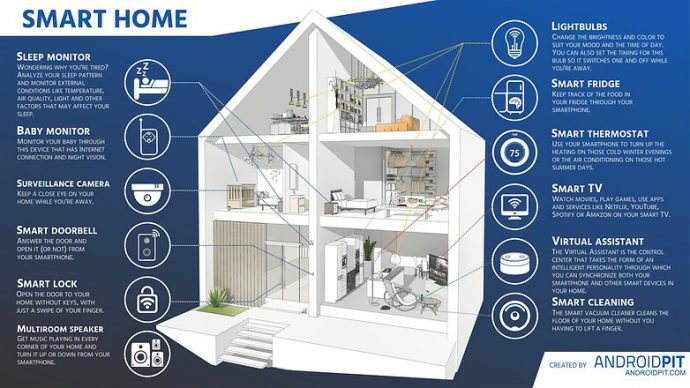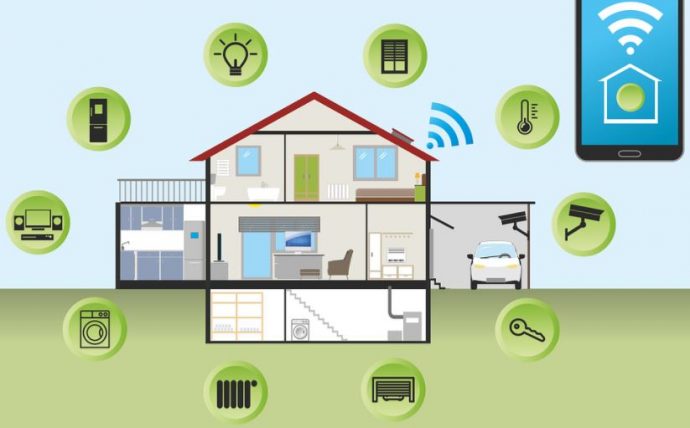The buildings and houses of the future already exist. Controlling appliances, lights and curtains with one or several buttons, or through an app on the cell phone, have ceased to be typical scenes of a science fiction movie. Builders, developers and architects working with applied technology entered a kind of time tunnel, a window that gave them access in instalments to what will come: smart homes and offices.
image source: here
With the help of home automation – the conjunction of domus, house in Latin, and robotics – and the inmotic-integral automation of real estate, experts in the field offer solutions to save energy, implement modern security measures and even increase the levels of comfort in apartments, houses, offices and hotels. This local tendency mimics the advance of a phenomenon with a global impact. It is important to highlight the benefits of investing in technology. In addition to comfort, you forget to turn lights on and off. And on top of that, you save energy. For example, there are homes with a central system, which through a closed wireless connection network allows users to remotely manage the lighting, some domestic appliances, heating, curtains and blinds, the security system and electronic locks, and even the external irrigation system.
image source: here
It’s not complicated
Automating a house or apartment is a simple task. The installation of a hub or router and a set of adapters make magic happen. Having a great router is actually the pillar of most smart home appliances. It will not only connect everything together but will also provide you with great internet connections for so you can play online games like blackjack or watch your favourite online movies on streaming services like Netflix anywhere in your house. Everything is designed to add modules to the central system: from motors for raising and lowering shutters to devices that will enable the programming of lights or devices, such as a coffee machine that will turn on by itself at the time indicated. Taking into account the exponential growth of automations in the home, the industry tends to integrate systems, with the cell phone as the great remote control.
image source: here
Then there’s the Habeetat system, created by Solidmation which integrates electrical devices in domestic, industrial and professional environments. The devices interact and are controlled remotely from a tablet or phone with the assistance of Habeetat Planner software, developed by the same company for that sole purpose.
The cost of automating a home varies proportionally to the number of square meters it occupies and its equipment. However, home automation adds value to the property as well as adding comfort.
Apple and Samsung also compete for home automation. The American brand presented its Home app and its HomeKit accessories abroad, but whoever wants those products can buy them outside and bring them in their carry-on luggage. Once installed, the Apple devices talk to each other and become smarter. In this line, the South Korean company created Smart Home, the system that makes appliances and electronic devices of the brand talk. It is also compatible with those of others, such as Nespresso.
The Swiss manufacturer of premium coffee machines has two models that can be operated from the cell phone via Bluetooth on sale. With the free download of the Nespresso app, the user can program and operate the Prodigio & Milk and the Expert & Milk models remotely. The ecosystem that makes the home a smart environment is here to stay.



